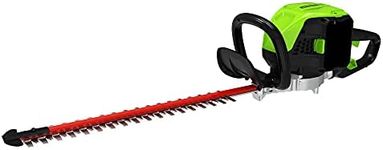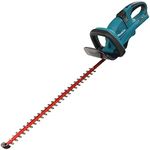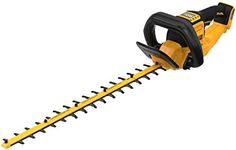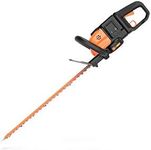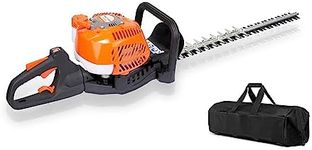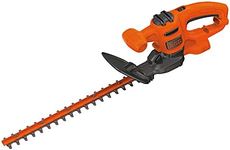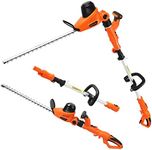Buying Guide for the Best Hedge Trimmers
Choosing the right hedge trimmer can make maintaining your garden much easier and more enjoyable. The best hedge trimmer for you depends on the size and type of hedges you have, how often you plan to use it, and your comfort with handling garden tools. By understanding the key features and how they relate to your needs, you can select a hedge trimmer that is safe, efficient, and comfortable to use.Power SourceThe power source refers to how the hedge trimmer is powered—either by electricity (corded), battery (cordless), or gasoline. This is important because it affects the tool's mobility, power, and maintenance needs. Corded electric trimmers are lightweight and offer unlimited run time but require access to a power outlet and can be limited by the cord length. Cordless battery trimmers offer more freedom of movement and are quieter, but their run time is limited by battery life. Gasoline trimmers are the most powerful and suitable for large or tough jobs, but they are heavier, noisier, and require more maintenance. To choose the right one, consider the size of your garden and how far you need to move from a power source, as well as your comfort with handling heavier or more complex equipment.
Blade LengthBlade length determines how much hedge you can cut in one pass and how easily you can shape your hedges. Shorter blades (around 16-18 inches) are easier to control and are best for small hedges or detailed work. Medium blades (around 20-24 inches) offer a balance between control and efficiency, suitable for most home gardens. Longer blades (over 24 inches) can cut more at once and are better for large, straight hedges, but they can be harder to handle. Choose a blade length that matches the size and shape of your hedges and your comfort with handling the tool.
Tooth GapThe tooth gap is the space between the teeth on the blade and determines the maximum branch thickness the trimmer can cut. Smaller gaps (around 3/8 inch) are suitable for young, thin branches and fine trimming. Medium gaps (around 5/8 inch) can handle most garden hedges with moderate branch thickness. Larger gaps (over 3/4 inch) are designed for older, thicker branches and tougher jobs. Think about the type of plants you have—if your hedges have thick, woody branches, a larger tooth gap will be more effective.
WeightThe weight of the hedge trimmer affects how long you can use it comfortably and how easy it is to maneuver, especially when trimming tall or wide hedges. Lighter trimmers are easier to handle and reduce fatigue, making them ideal for smaller jobs or users who may not have a lot of upper body strength. Heavier trimmers may offer more power but can be tiring to use for extended periods. Consider how long you typically spend trimming and your ability to handle heavier tools when making your choice.
Safety FeaturesSafety features such as blade covers, dual switches, and hand guards are important for preventing accidents and injuries. Blade covers protect you and the blade when the trimmer is not in use. Dual switches require both hands to operate the trimmer, reducing the risk of accidental starts. Hand guards protect your hands from debris and accidental contact with the blade. If you are new to using power tools or want extra peace of mind, look for models with multiple safety features.
Ergonomics and Handle DesignErgonomics refers to how comfortable and easy the hedge trimmer is to hold and use. Features like soft-grip handles, adjustable or rotating handles, and balanced weight distribution can make a big difference in comfort, especially during longer trimming sessions. If you have a lot of hedges or need to trim at different angles, look for a trimmer with ergonomic handles that reduce strain on your hands and wrists.
